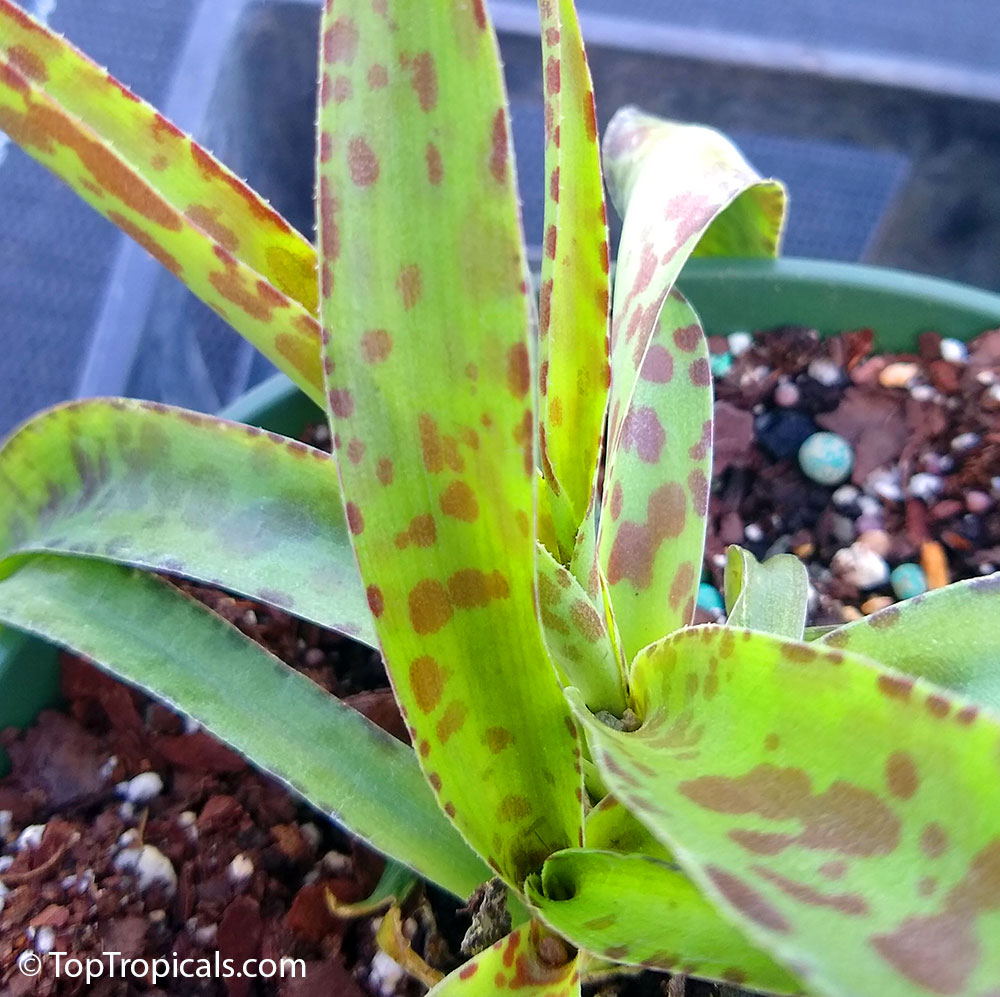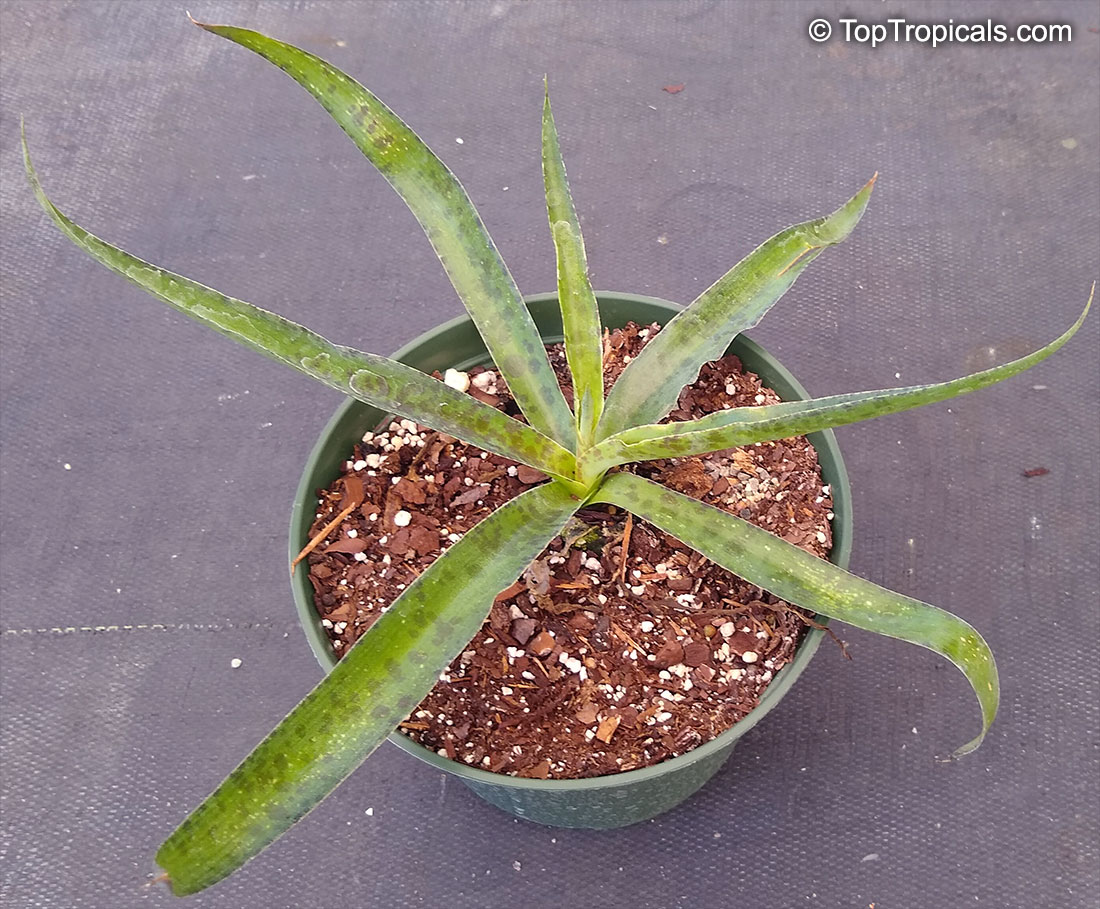Manfreda undulata (False Agave)
Top Tropicals Plant Encyclopedia
Botanical name: Manfreda undulata
Common names: False Agave, Chocolate Chips
Family: Asparagaceae
Subfamily: Agavoideae
Origin: Mexico, Central America





This plant has mesmerizing and unique foliage which makes it a focal point in any plant collection, big or small. The chocolate chip plant (Manfreda undulata) is a visually interesting species of succulent which makes an attractive addition to the flowerbed. The chocolate chip manfreda resembles a low-growing rosette with frilly leaves. The dark green foliage is dotted with attractive chocolate brown spots. The resemblance to chocolate chips gives this variety its name.
Manfreda plants are closely related to the agave family, which explains why this variety of manfreda is sometimes called the chocolate chip false agave. Like many varieties of manfreda, chocolate chip doesn't die after blooming as do agave plants. The buds form on tall stalks in late spring, followed by fascinating wiry type blossoms. The bloom spike can reach 4-6 ft tall with interesting burgundy brown flowers.
The chocolate chip plant has a low-growing profile, only reaching heights of about 4 inches tall. Its elegantly arched, spineless leaves bear resemblance to a starfish. The long succulent leaves give the plant a diameter of 15 inches or more. Prefers a well-drained, drier soil. For container gardening, use a pot which offers plenty of vertical root space. A minimum of 12 inches deep is recommended. Plant in a sunny location; however, they do prefer a bit of afternoon shade in hot climates. Once established, chocolate chip plants are drought resistant. Supplementing water during dry spells keeps succulent leaves firm.
Chocolate chip is root hardy to USDA zone 8 but may lose its leaves during the winter. It does well as a container plant and can be brought inside when grown in colder climates. Reduce watering of potted manfreda during winter dormancy to prevent the roots from rotting.
Enjoy this unique-looking succulent for its incredibly wavy leaves and intense spotting. Long, silvery blue-green leaves are succulent, but not as rigid as Agave. Near-black spotting is present on both on the fronts and backsides of the leaves, and contrasts beautifully with the lighter colored leaves. A very fine white margin lines the edges of the leaves with a serrated edge.
The generic name honors 14th-century Italian botanist and medical writer Manfredus de Monte Imperiale.


